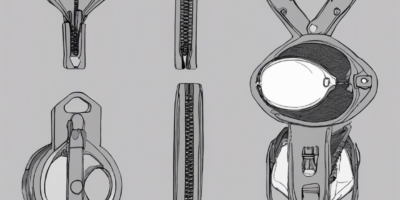Bees, those fascinating and essential creatures buzzing around in our gardens, are known for their impressive work ethic and intricate social structures. They are also equipped with a unique feature that sets them apart from many other insects – their eyes. Bees have a remarkable way of perceiving the world around them through their eyes, which play a crucial role in various aspects of their lives, from foraging for nectar to communicating with their hive mates. In this article, we will delve into the number of eyes bees have and explore the fascinating world of bee vision.
Anatomy of Bee Eyes
Compound Eyes
Bees have two primary types of eyes: compound eyes and simple eyes. The most prominent and well-known are their compound eyes, which are large, multifaceted structures located on the sides of their head. Compound eyes are made up of hundreds or even thousands of individual units called ommatidia. Each ommatidium contains a lens, a series of light-sensitive cells, and nerve fibers. These ommatidia work together to create a mosaic image, allowing bees to see a wide field of view.
Simple Eyes
In addition to their compound eyes, bees also have three small ocelli, or simple eyes, located on the top of their head in a triangular pattern. While compound eyes are primarily used for detecting motion and navigating their surroundings, ocelli are sensitive to light intensity and help bees orient themselves. They are particularly useful for maintaining stability during flight and adjusting to changes in light conditions.
How Many Eyes Do Bees Have?
Now, the burning question – how many eyes do bees have? The answer is fascinating. Bees actually have five eyes in total – two compound eyes and three simple eyes. This unique combination of eyes gives bees a multifaceted view of the world, allowing them to gather information from their environment in different ways. Their compound eyes enable them to detect colors, patterns, and motion, while their ocelli provide crucial information about light intensity and direction.
Functions of Bee Eyes
Visual Perception
The compound eyes of bees are well-equipped for visual perception. They are sensitive to ultraviolet light, which is invisible to the human eye, allowing bees to see patterns on flowers that guide them to nectar sources. Bees are also known for their ability to perceive polarized light, which helps them navigate and communicate with other bees. Their compound eyes are particularly adept at detecting motion, making them excellent predators of small insects like flies and aphids.
Navigation
Bees rely heavily on their eyes for navigation. They are capable of recognizing landmarks and patterns in their environment, allowing them to navigate to and from food sources with remarkable accuracy. Their compound eyes help them orient themselves in relation to the sun, while their ocelli assist in maintaining a stable flight path. Bees are also known for their famous waggle dance, a form of communication that conveys the location of food sources to other members of the hive.
Social Interactions
In addition to their practical functions, bee eyes also play a crucial role in social interactions within the hive. Bees use their visual senses to recognize each other, communicate through various body movements, and coordinate group activities like foraging and swarming. Their ability to perceive ultraviolet patterns on flowers is essential for efficient foraging, as it helps them distinguish between different types of flowers and locate the most rewarding ones.
FAQ: Frequently Asked Questions
1. Do bees see in color?
Yes, bees are capable of seeing in color. Their compound eyes contain specialized receptors that allow them to detect a wide range of colors, including ultraviolet light, which is invisible to humans.
2. Can bees see in the dark?
While bees are not able to see in complete darkness, they are capable of seeing in low-light conditions. Their compound eyes are sensitive to light intensity, allowing them to navigate and forage even during dusk or dawn.
3. How far can bees see?
Bees have excellent long-distance vision, with some species able to see objects several kilometers away. Their compound eyes are well-suited for detecting motion and patterns, making them adept at spotting potential threats or food sources from a distance.
4. Do all bees have the same number of eyes?
Yes, all bees have five eyes – two compound eyes and three simple eyes (ocelli). This common eye structure is a defining feature of bees, distinguishing them from other insects.
5. How do bee eyes differ from human eyes?
Unlike human eyes, which have a single lens and retina, bee eyes are made up of multiple individual units (ommatidia). This compound eye structure gives bees a mosaic view of the world, allowing them to detect motion and patterns in a wide field of view.
6. Can bees see in the ultraviolet spectrum?
Yes, bees are able to see in the ultraviolet spectrum, a range of light that is invisible to humans. This unique ability helps bees detect patterns on flowers and navigate their environment more effectively.
7. Why do bees have compound eyes and simple eyes?
The combination of compound eyes and simple eyes (ocelli) in bees serves different purposes. Compound eyes are ideal for visual perception, detecting motion, and identifying colors, while ocelli are specialized in light intensity and direction, aiding bees in flight stability and orientation.
8. How do bees use their eyes for communication?
Bees use their visual senses for communication through various body movements and dances. The famous waggle dance performed by forager bees conveys information about the location of food sources to other members of the hive, helping them navigate to valuable nectar and pollen.
9. Can bees see polarized light?
Yes, bees are able to see polarized light, which is especially useful for navigation and orientation. By perceiving polarized patterns in the sky, bees can determine the position of the sun even on cloudy days, aiding them in maintaining a straight flight path.
10. How important are bee eyes to their survival?
Bee eyes are critical for the survival of bees. Their unique visual abilities enable them to navigate complex environments, locate food sources, communicate with hive mates, and defend against predators. Without their remarkable eyesight, bees would struggle to perform essential tasks vital for the success of the hive.
In conclusion, the eyes of bees are a marvel of evolution, showcasing the incredible adaptations that have enabled these tiny insects to thrive in diverse habitats worldwide. Their complex visual system, combining compound eyes for perception and motion detection with simple eyes for light sensitivity and orientation, plays a fundamental role in every aspect of their lives, from foraging and navigation to social interactions within the hive. Next time you see a bee buzzing around your garden, take a moment to appreciate the beauty and functionality of their five remarkable eyes.














Comments